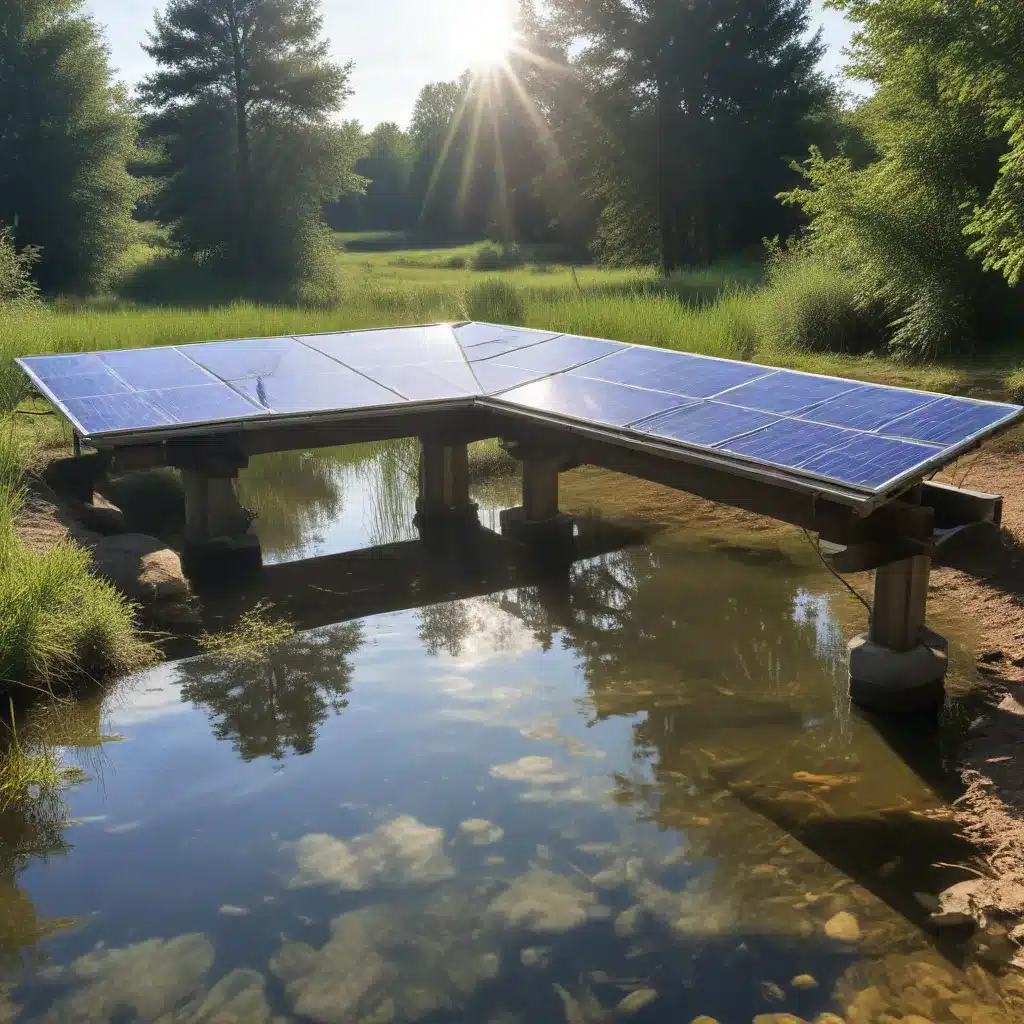
The Promise of Salinity Gradient Solar Ponds
Renewable energy solutions have gained increasing attention as the global demand for energy continues to rise. Among the various renewable technologies, solar ponds have emerged as a promising option for harnessing and storing solar radiation. Salinity gradient solar ponds (SGSPs) in particular offer a unique approach to capturing and retaining thermal energy, making them a versatile tool in the renewable energy landscape.
SGSPs utilize the natural properties of saltwater to create a thermal gradient, trapping solar heat in the lower layers of the pond. This mechanism allows the warm, salty water at the bottom to remain dense and stratified, preventing the heat from dissipating upwards. The stored thermal energy can then be extracted and utilized for various applications, such as heating, power generation, and desalination.
One of the key advantages of SGSPs is their ability to provide a stable and reliable energy source, unlike other solar technologies that rely on direct sunlight. The thermal energy stored in the lower layers of the pond can be accessed for several hours or even days, making SGSPs suitable for base-load power generation. Additionally, their adaptability to different climates and locations further enhances their appeal as a renewable energy solution.
Advances in Salt Selection and Gradient Maintenance
The performance of SGSPs is heavily influenced by the type of salt used in the brine solution and the stability of the salinity gradient. Traditionally, sodium chloride (NaCl) has been the most commonly employed salt due to its desirable properties, such as increasing solubility with temperature, thermal stability, and high transparency in water.
However, researchers have explored the use of alternative salts, including natural salt solutions and fertilizer salts, as viable options for SGSPs. These alternative salts, such as magnesium chloride (MgCl2) and urea, have demonstrated comparable or even enhanced thermal and salinity characteristics compared to NaCl, while also offering potential cost savings and environmental benefits.
Magnesium chloride, for instance, is known for its high solubility, affordability, and hygroscopic nature, which can prevent the formation of surface crusts that could hinder solar radiation absorption. Fertilizer salts, like urea and nitrate of potash, have also shown promising results in creating stable convective liners and serving as nutrient sources for aquatic life within the pond, contributing to its overall ecosystem health.
Maintaining the delicate balance of the salinity gradient is crucial for the optimal performance of SGSPs. Researchers have explored various methods to enhance the stability of the gradient, such as the incorporation of porous media and phase change materials (PCMs) in the lower convective zone (LCZ).
Porous media, like coal cinder, can slow the upward diffusion of salt, preserving the salinity gradient and improving the heat insulation capacity of the LCZ. PCMs, on the other hand, have been used to enhance long-term heat storage by regulating temperature fluctuations and maintaining the desired temperature range in the LCZ.
Optimizing Efficiency through Design and Integration
The efficiency of SGSPs is influenced by various factors, including temperature, turbidity, wall profiles, and heat extraction methods. Researchers have explored strategies to address these factors and enhance the overall performance of these systems.
Reducing heat loss and maintaining the desired temperature gradient within the pond are crucial for maximizing efficiency. Techniques such as using reflective covers, optimizing wall profiles, and incorporating PCMs have demonstrated promising results in improving thermal stability and reducing heat dissipation.
Additionally, the method of heat extraction from the pond plays a significant role in its overall efficiency. Researchers have explored both direct and indirect heat extraction methods, utilizing external and internal heat exchangers to transfer the stored thermal energy to various applications, such as power generation and desalination.
Integrating SGSPs with other renewable technologies, like solar collectors, has also been investigated as a means of enhancing efficiency. By combining the thermal energy storage capabilities of SGSPs with the additional heat collection of solar collectors, the overall energy output and system performance can be improved.
Addressing Environmental Considerations and Regulatory Challenges
While SGSPs offer numerous benefits as a renewable energy source, there are also environmental and regulatory considerations that must be addressed. The large water and land requirements of SGSPs, as well as the potential for contamination due to their high salinity, necessitate thorough environmental assessments and compliance with local regulations.
Governments and policymakers play a crucial role in shaping the deployment and adoption of SGSPs. Regulatory frameworks, including land-use policies, water rights, and environmental protection laws, can either facilitate or hinder the feasibility and operation of these systems. Establishing favorable incentives and support programs can also contribute to the widespread adoption of SGSPs and other renewable energy technologies.
The Future of Solar Pond Technology
As the global demand for renewable energy continues to grow, the potential of SGSPs to contribute to a sustainable energy future is increasingly recognized. Ongoing research and technological advancements are focused on improving the efficiency, cost-effectiveness, and environmental sustainability of these systems.
Future developments in SGSPs may include the incorporation of emerging technologies, such as smart sensors, artificial intelligence, and blockchain, to enhance monitoring, maintenance, and optimization of system performance. Additionally, the integration of SGSPs with other renewable sources, like geothermal energy, can create more stable and continuous energy supply solutions.
As the world transitions towards a more sustainable energy landscape, salinity gradient solar ponds stand as a promising technology that can play a vital role in harnessing and storing solar energy, contributing to the broader efforts to address global energy challenges and mitigate the impacts of climate change.
By leveraging the latest advancements in materials, design, and integration strategies, SGSPs can become an increasingly viable and attractive option for residential, commercial, and industrial applications, paving the way for a more sustainable and efficient energy future.


